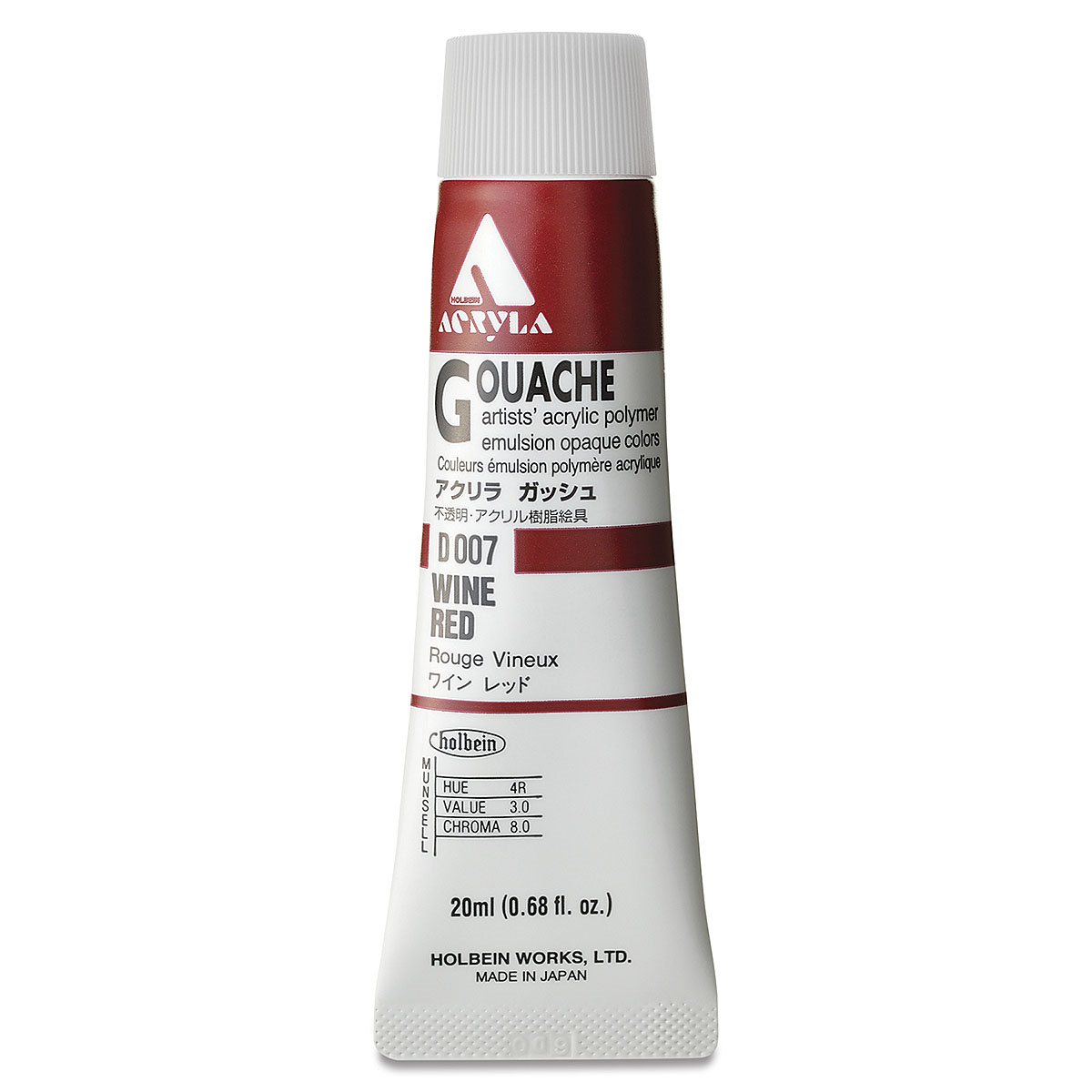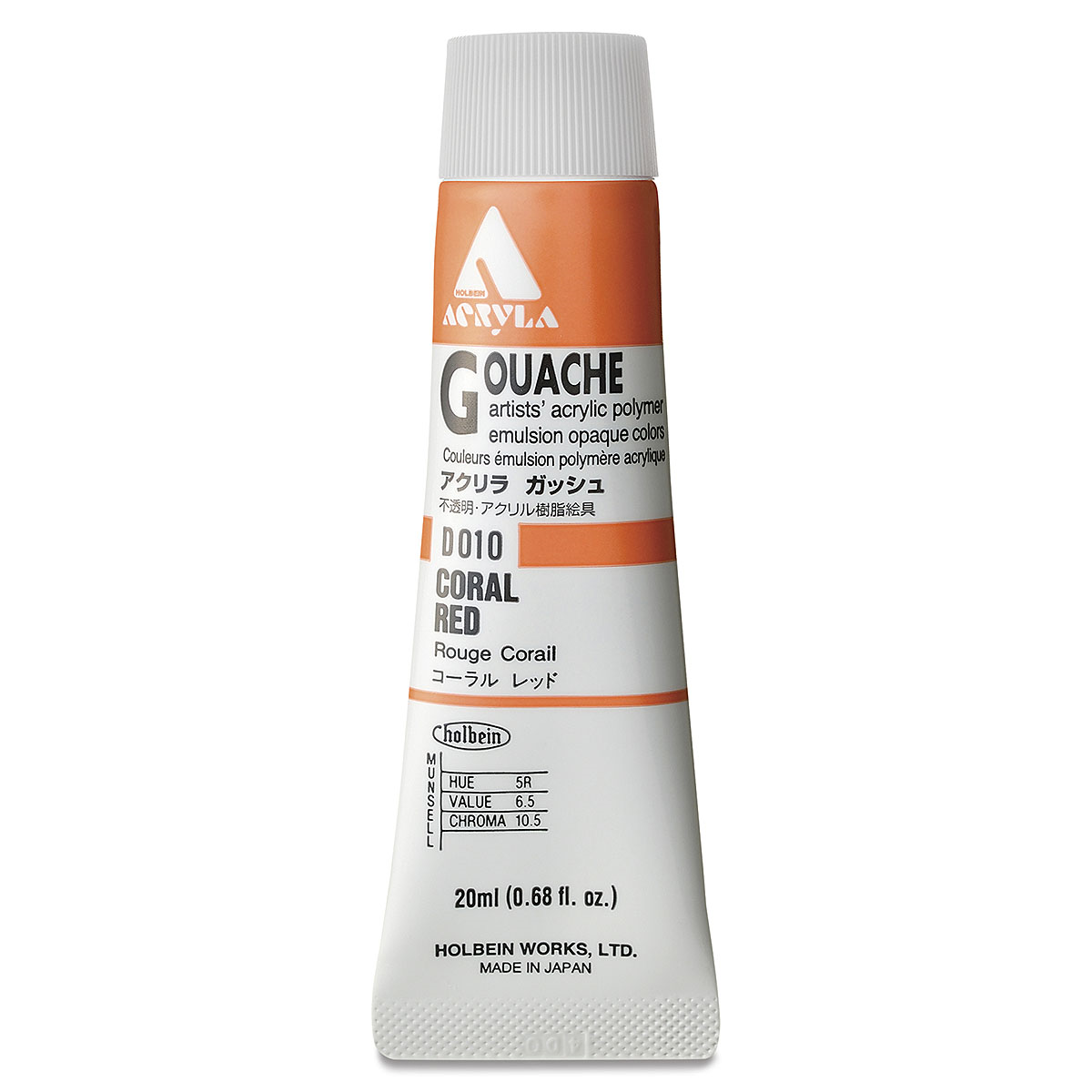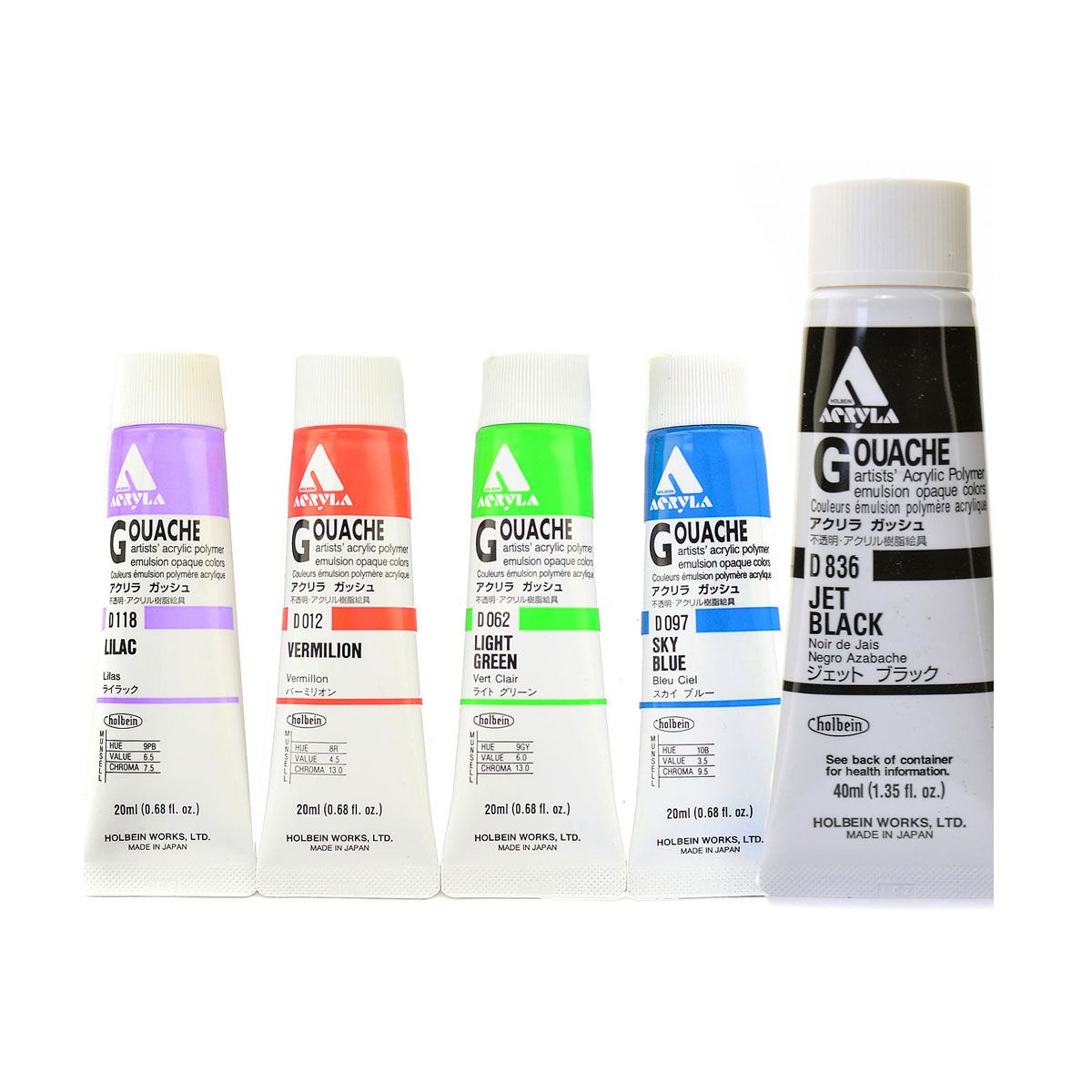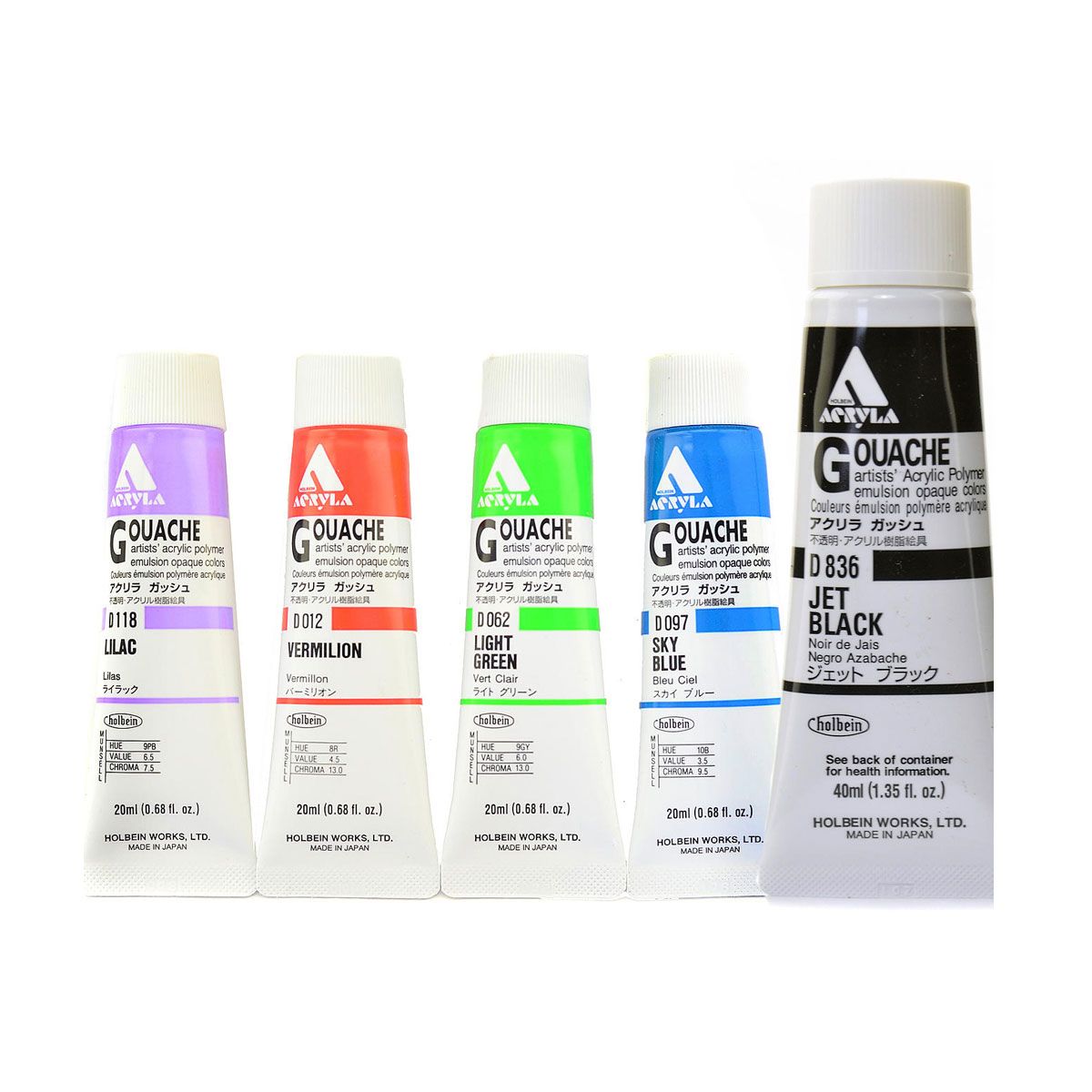Holbein Acryla Gouache Cosmos Pink 20 ml
D008 D708 Cosmos Pink/Rose Cosmos - PR122 Quinacridone Magenta, PR146 (n/a), PW6 Titanium dioxide
Quinacridone Magenta became the standard colour name for a deep, violet red. PR122 has become particularly popular in the formulation of Magenta for CMYK process printing. Titanium dioxide was first discovered in 1821, although it could not be mass produced until 1919.
Series: A
Lightfast: **
D008 D708 Cosmos Pink/Rose Cosmos - PR122 Quinacridone Magenta (organic, quinacridone), PR146 (n/a), PW6 (Inorganic, Titanium dioxide)
Series: A
Lightfast: **
Pigment 1: PR122 Quinacridone Magenta
Quinacridone Magenta came from a red violet aniline dye that was first produced in 1858 by Natanson. It was called Magenta to commemorate a battle in Magenta, Italy. Over time, Magenta became the standard colour name for a deep, violet red. Although quinacridone compounds became known in the late 19th century, methods of manufacturing so as to make them practical for use as commercial pigments did not begin until the 1950s. PR122 has become particularly popular in the formulation of Magenta for CMYK process printing.
Pigment name: PR122-Quinacridone Magenta
Pigment Type: organic, quinacridone
Chemical Name: n/a
Properties: Quinacridone Magenta is a semi-transparent and powerful bluish red with an impressive mixing range. It makes an excellent glazing colour and is one of the bluest of the Quinacridone colours. The pigment's properties vary considerably, depending on how it is ground. Quinacridone pigments have relatively low tinting strength in general. For this reason, quinacridone colours are often expensive, because more pigment is required in the formulation.
Permanence: Quinacridone Magenta offers very good lightfastness in most media, but some have argued that it is less lightfast in watercolour form. Although Quinacridone Magenta received only a passing grade of "fair" under ASTM test protocols, other test results have rated the pigment very good to excellent. Transparent reddish violet pigments in general have more problems with lightfastness than any other range of colours. PR122 is often used as the Magenta of CMYK (four colour) process printing because it offers a better trade off between tinting strength and lightfastness than other pigments in its class.
Toxicity: Quinacridone Magenta has no acute hazards. Overexposure to quinacridone pigments may cause skin irritation. Quinicridone pigments contain a compound found to be a skin, eye, and respiratory irritant.
Alternate Names: Acra Red, Quinacridone Violet (PV19), Thalo Red Rose.
Pigment 2: PR146 Naphthol Red
History n/a
Pigment name: PR146 Naphthol Red
Pigment Type: n/a
Chemical Name: n/a
Properties: n/a
Permanence: Naphthol Reds vary widely in lightfastness. This Naphthol Red (PR146) has fair to poor permanence and always fades in tints. It is not suitable for outdoor use.
Toxicity: Naphthol Reds are not considered toxic. They may cause eye, skin, or respiratory irritation. Contact with dry pigment should be avoided.
Alternate Names: Naphthal, Naphthol Bordeaux, Naphthol Carbamide, Naphthol Carmine, Permanent Carmine, Permanent Red.
Pigment 3: Titanium White PW6
Titanium is the ninth most abundant element in the Earth's crust, however mineral deposits that are economical to mine are less common. Titanium dioxide was first discovered in 1821, although it could not be mass produced until 1919. Widespread use of the pigment began in the 1940s. Since that time, it has become the most commonly used white pigment. The name comes from the Latin word Titan, the name for the elder brother of Kronos and ancestor of the Titans, and from the Greek word tito, meaning day or sun.
Pigment name: Titanium White PW6
Pigment Type: Inorganic
Chemical Name: Titanium dioxide
Properties: Titanium White is the most brilliant of the white pigments. It is considered an all-purpose oil color useful in all techniques and the best all around white. Its masstone is neither warm nor cool, placing it somewhere between Lead White and Zinc White. It is less prone to cracking and yellowing than Lead White, but it still yellows easily. Titanium White dries slowly in oil form, more slowly than Lead White but more quickly than Zinc White. It is opaque in oil and acrylic forms and semi-opaque in watercolour form. This pigment has good chemical stability, and its tinting strength is superior to both Lead White and Zinc White.
Permanence: Titanium White has excellent permanence and lightfastness.
Toxicity: Titanium dioxide is highly stable and is regarded as completely non-toxic. Animal studies give no indication that it is absorbed biologically, even after long periods of exposure. The primary safety concern is with inhalation of fine pigment dust particles. Titanium White, if inhaled in large amounts over the course of several years, may cause a benign pneumoconiosis that is visible on x-rays. The National Institute of Occupational Safety and Health (NIOSH) considers fine titanium dioxide particles, if inhaled, to be a human carcinogen. The primary concern for artists is to avoid exposure to fine particulate dust from raw pigments.
Alternate Names: None.
| Size | 20 ml |
|---|---|
| Brand | Holbein |
| Country of Manufacture | Japan |
| Type of Store Credit value | Select |
















